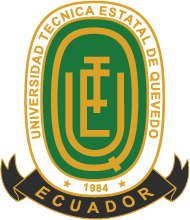Improvement of processes for granting credits: application of the KANBAN methodololy
DOI:
https://doi.org/10.18779/csye.v7i1.613Keywords:
credit analysis, financial analysis, financial process improvement, financial performance, credit risk, decision makingAbstract
The main objective of the article is to present a proposal for the improvement of procedures in the granting of credits in a financial entity in Ecuador, through the Kanban methodology, since currently the processes are carried out in an obsolete way with extensive procedures that generate necks of bottle and increased response time for the customer; In this way, the proposal is expected to reduce production costs and in turn maximize the financial and economic performance of the entity under study. A quantitative research design is proposed, of a descriptive type that allowed deducing the financial situation of the entity to solve the needs when implementing the Kanban methodology in the processes to grant credits. It was established that in the financial entity the process for a credit generates an office time of 24 hours and when adding the average time for transferring documents physically adds a total of 32 hours, that is, the process takes an average of 4 days from its I start with the advisor until I finish with the file of the file. By applying the Kanban methodology, the process time is reduced to an estimated 2 days, generating a more efficient process, reducing costs and increasing the productivity and performance of the entire work team; It has been estimated that the entity will have a 50% increase in its productivity, taking as a reference the relative variations of the horizontal analysis that each item has in the income statement.
Downloads
References
Anderson, D. (2022). La pizarra digital inspirada en Kanban. https://soka.gitlab.io/blog/post/2019-07-02-02-trello-kanban-david-anderson/
Arango, M., Campuzano, L., & Zapata, J. (2015). Manufacturing process improvement using the Kanban. Revista Ingenierías Universidad de Medellín, 14.
Arciniegas, O., & Pantoja, M. (2020). Análisis de la situación crediticia en las Cooperativas de. Revista Espacios, 41(27), 10. https://doi.org/0798-1015
Ballesteros, D., B., & P. (2008). UNA FORMA PRÁCTICA PARA APLICAR EL SISTEMA KANBAN EN LAS MYPIMES. Scientia Et Technica, XIV(39), 200-205.
Bermejo, M. (2011). El Kanban. Universidad Oberta de Catalunya, 35.
Castellano, L. (2019). KANBAN. METODOLOGIA PARA AUMENTAR LA EFICIENCIA DE LOS PROCESOS. 3c Tecnología: glosas de innovación aplicadas a la pyme, p30-40.
Domar, E. (1946). ¿Expansión de Capital, Tasa de Crecimiento y Empleo? Econométrica, Volumen 14, No 2, 137-147.
Esan, C. (2019). Portal de negocios de ESAN Graduate School of Business. https://www.esan.edu.pe/conexion-esan/los-principios-de-kanban-para-la-gestion-de-proyectos
Geek, L. w. (2009). El método Toyota aplicado al software. http://bosqueviejo.net/wordpress/2009/06/22/kanban-el-metodo-toyota-aplicado-al-software
Harrod, R. (1939). Un ensayo sobre teoría dinámica. The Economic Journal , vol. 49, núm. 193, 14-33.
Huisa, T. (2019). Propuesta de mejora del servicio de crédito aplicando la Metodología Lean service en la Cooperativa de ahorro y crédito Fondesurco. Universidad tecnológica de Perú, 137.
J.Anderson, D. (2022). La pizarra digital inspirada en Kanban. https://soka.gitlab.io/blog/post/2019-07-02-02-trello-kanban-david-anderson/
Kanbazine. (2022). Kanbazine. https://kanbanize.com/es/recursos-de-kanban
Kniberg, H., Skarin, M., Poppendieck, M., & Anderson, D. (2010). Kanban y Scrum obteniendo lo mejor de ambos. C4Media Inc, 23.
Mas, D. (2019). Blog Fhios. https://www.fhios.es/metodologia-kanban-pros-y-contras/
Ochoa , J. C., Galeano, W., & Agudelo, L. G. (2010). Construcción de un modelo de score para el otorgamiento de crédito en una entidad financiera. Perfil de Coyuntura Económica N°16, 1-32.
Rodriguez, J., CasquetT, E., & Atance, I. (2003). Análisis económico-financiero de las cooperativas agrarias en Castilla y León. CIRIEC-España, Revista de Economía(46), 41. https://doi.org/0213-8093
Romero, B. (31 de agosto de 2015). Tus Finanzas. https://tusfinanzas.ec/la-estructura-del-sistema-financiero-ecuatoriano/
Solidaria, S. d. (2022). https://estadisticas.seps.gob.ec/index.php/estadisticas-sfps/#:~:text=Monetaria%20y%20Financiera.-,Resumen,al%20menos%20un%20cr%C3%A9dito%20vigente.
Solidaria, S. d. (03 de 03 de 2022). Portal estadístico SEPS. https://estadisticas.seps.gob.ec/index.php/estadisticas-sfps/#:~:text=Monetaria%20y%20Financiera.-,Resumen,al%20menos%20un%20cr%C3%A9dito%20vigente.
Stsepanets, A. (27 de 03 de 2022). GANTTPRO. https://blog.ganttpro.com/es/metodo-kanban-para-mejorar-el-flujo-de-trabajo/
Torres, R. (2011). Una Herramienta Expresiva para Implementación de Tableros Kanban Virtuales. https://repositorio.uchile.cl/handle/2250/104052
Published
How to Cite
Issue
Section
License
Copyright (c) 2023 Hipatia Carolina Giron Calva, Jonathan Alexander Ramirez Piedra

This work is licensed under a Creative Commons Attribution-NonCommercial-ShareAlike 4.0 International License.
Licensing Agreement
This journal provides free access to its content through its website following the principle that making research available free of charge to the public supports a larger exchange of global knowledge.
Web content of the journal is distributed under a Attribution-NonCommercial-ShareAlike 4.0 International.
Authors may adopt other non-exclusive license agreements for the distribution of the version of the published work, provided that the initial publication in this journal is indicated. Authors are allowed and recommended to disseminate their work through the internet before and during the submission process, which can produce interesting exchanges and increase citations of the published work.




